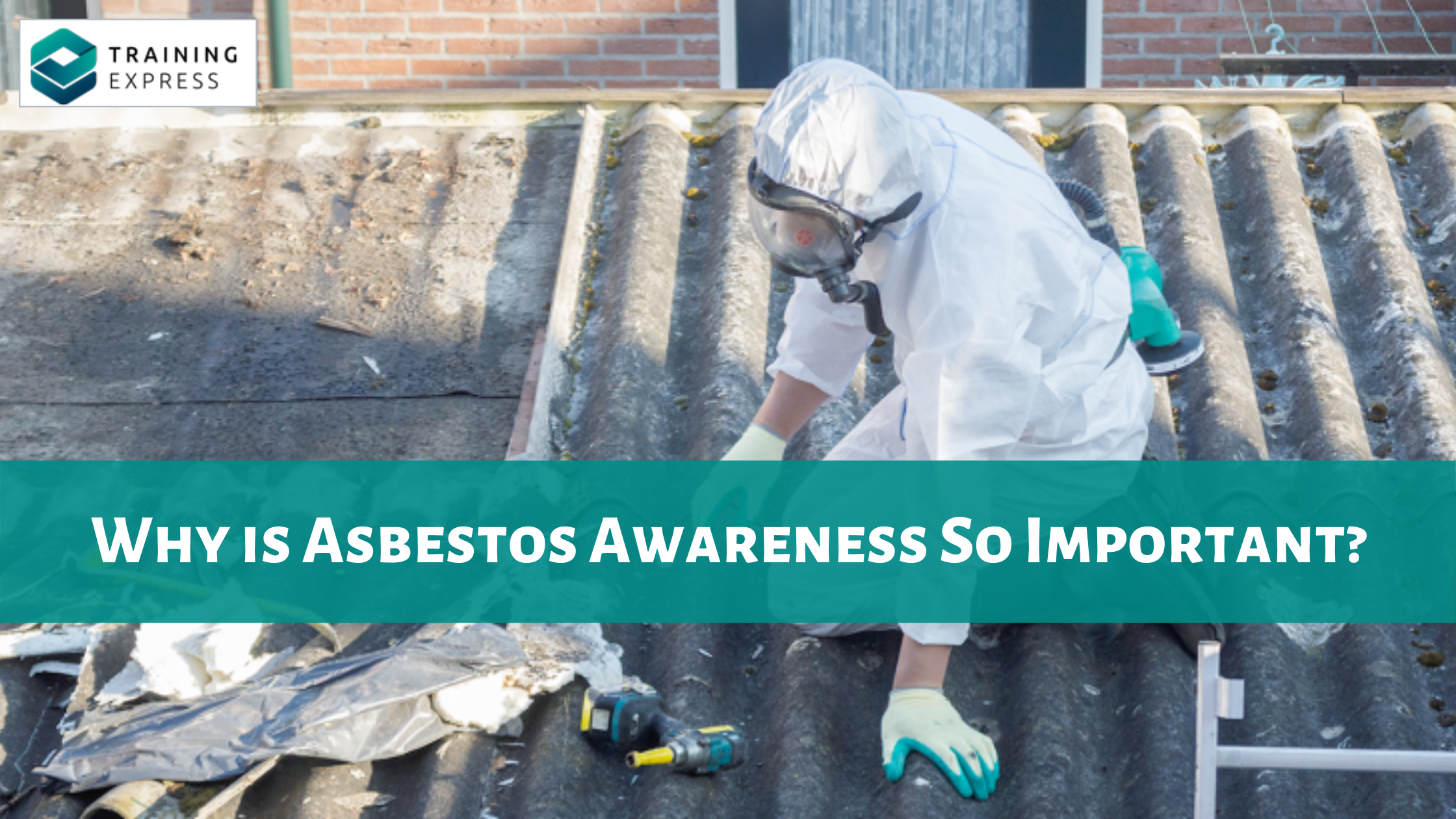
Asbestos isn’t a new thing. It has quite a long history. People have been using asbestos in construction work since the beginning of industrialisation. As asbestos was being used rapidly in construction works, the complications and health issues regarding asbestos exposure were discovered eventually. And we came to know how asbestos is dangerous to our health with the potential of causing some severe diseases. All these things had boosted the importance of asbestos awareness over time.
Though asbestos doesn’t cause any immediate harm to your body, it can cause severe health complications in the long run. You might have heard of asbestosis or mesothelioma. The later is a rare type of lung cancer that is directly related to asbestos exposure. Since you’re reading out this write-up, we assume you’ve got an interest in asbestos and want to know about the importance of asbestos awareness. This article will give you an overview of asbestos and explain why asbestos awareness is so important. Now let’s dive right in.
What is asbestos?
Asbestos is a highly dangerous material for those working in close contact with asbestos, especially in construction sites, old buildings, asbestos mines, etc. Generally, asbestos refers to a group of six naturally occurring silicate minerals that we extract through mining. These minerals are fibrous and have some unique features, such as resistance to corrosion, heat, and electricity. This quality makes asbestos a good fit for using in construction works, especially as an insulator in electric wirings and joints, ceiling, floor panellings, air ducts, etc.
However, the fibrous structure of asbestos has made it a threat to health. The tiny fibres of asbestos may get released into the air because of erosion and other processes. It poses a severe risk to health as these floating particles of asbestos may get into your body through inhalation and ingestion. The sad part is, these tiny particles get trapped inside the body and stay for a long time, causing different health issues from inflammation to fatal lung cancers.
Asbestos usage history
People have known about asbestos for a long time. However, it gained immense popularity in the middle of the 19th century. The qualities and properties of asbestos made it highly suitable and efficient for different construction works. The fibrous structure of asbestos gives it flexibility, meaning you can shape it as you want and use it in various applications. Asbestos can absorb sound and offers excellent insulation from fire, heat and electricity. That’s why asbestos is an ideal choice for construction managers to use it in different building works.
However, it took several decades to understand the health risk of asbestos since its outset in the construction industry. Later on the 19th century, health experts started to realise the danger of asbestos and raised voices against its use. It boosted up the importance of asbestos awareness. But the use of asbestos wasn’t stopped, and millions of buildings across the world still contain asbestos materials.
Since then, asbestos has caused many fatal diseases and led to the deaths of thousands of people involved in construction and repair works. After observing this scenario and constant voice against asbestos, the United Kingdom banned asbestos in August 1999, following a directive by the European Union.
What is asbestos exposure?
Generally, asbestos exposure means the possibility of inhaling or ingesting asbestos particles floating in the air. It causes when asbestos materials erode or get disturbed by other processes and release tiny asbestos fibres into the air. People working in asbestos mines or construction sites where they need to handle asbestos products are highly subject to asbestos exposure.
How does asbestos get released into the air?
Asbestos can come to the air from different sources, such as naturally occurring mines beneath the earth surface and various building materials made of asbestos. Asbestos mainly gets into the air in two ways. The first is working with asbestos products from their manufacturing to using in construction sites, and the second is erosion from old asbestos materials used in buildings.
In the UK, the first way doesn’t work anymore as there is a ban on asbestos use in any construction work. But, the second way still works. Because almost every old building, even that one built before 1999, may contain a significant amount of asbestos materials. So, there is a high risk of facing asbestos if you work in repairing or demolition of such old buildings.
However, asbestos doesn’t get into the air until some external factors force it. The reasons behind asbestos release include:
- Erosion and decay of natural asbestos deposits beneath the earth surface and materials containing asbestos.
- Improper handling of asbestos products.
- Sanding, cutting, and crushing old asbestos products during construction or repair works.
- Disposal of asbestos waste without any proper safety measures.
- Disturbing asbestos-contaminated solid through ploughing and gardening.
- Cleaning of piled up dust containing asbestos waste in old buildings.
Who is at risk from asbestos?
Asbestos is a hazardous substance as it can erode and the tiny particles float in the air which can get into your body when you breathe in asbestos-contaminated air. So, a question may arise in your mind about who is at risk of asbestos breathe. Yes, those who work in a setting where they have to handle asbestos products are at high risk from asbestos contamination. These people include:
- Construction and demolition workers.
- Repairing and maintenance workers such as Plumbers, joiners, electricians working in old buildings.
- Employees working in asbestos manufacturing and distribution.
Aside from these, if you’re interested in DIY activities and the building you’re living in is old, there’s a risk of asbestos exposure as you may cut or crush an asbestos board without knowing it.
Health risks from asbestos

Asbestos is dangerous when it gets into your body. It can enter your body mainly through inhalation and ingestion. However, you won’t face any immediate action of asbestos. It may take years to observe the health implications of asbestos after repeated exposure for a long time. Asbestos rarely gets out of your body. The tiny particles accumulate in your body tissues and internal organs. Over time, the accumulated asbestos causes irritation and inflammation, and damages the body tissues, which can result in some fatal diseases in the worst cases.
Asbestos contamination can cause some severe cancer and non-cancerous diseases. Mesothelioma, a cancer which occurs in the linings of lungs and abdomen, is the most common cancer that arises from asbestos exposure. Besides, asbestos can cause some other cancers such as lung cancer, ovarian cancer, and laryngeal cancer. Apart from these, the non-cancerous diseases caused by asbestos are asbestosis, pleural effusion, pleurisy, etc. So the importance of asbestos awareness is enormous to avoid these fatal health implications.
Asbestos-related regulations in the United Kingdom
According to HSE, every year, about 4.000 people die from mesothelioma and asbestos-related lung cancer in the UK. Following this severity of asbestos hazards, the Uk government banned the production, import and distribution of most of the asbestos products in 1999. However, still, there is a high risk of asbestos exposure for construction and maintenance workers as there are many old buildings containing asbestos products.
Under the Control of Asbestos Regulations 2012, property owners must be aware of the asbestos present in their property and take the right measures to prevent asbestos contamination. Moreover, those working in such properties that contain asbestos must know the importance of asbestos awareness and demonstrate a comprehensive knowledge of asbestos and related health hazards. Furthermore, they must have the necessary asbestos awareness training to ensure the safe handling of asbestos to avoid contamination.
Closing Note
Now let’s conclude the write-up. Throughout the article, we’ve tried to explain the importance of asbestos awareness to you. Hope you got the things clear. Being aware of asbestos hazards is not only a legal requirement but also is essential for your own safety if you’re involved in asbestos handling. So, you need to have proper knowledge about asbestos and its safety measures. To learn more about asbestos awareness, you can consider taking an online course from Training Express. So what are you waiting for? Have a look at this and get enrolled today.
Asbestos Awareness Training
Found it helpful? Share with your friends and family.
Read more on our blog
- LinkedIn Optimisation: Pierce through to New Era of Networking
- Worker Protection Act 2024 (UK)
- From Junior Roles to SEO Experts: Career Growth in the UK’s SEO Industry
- 8 Steps For Perfect Print On Demand Product Launches
- Why accountability is important in business?
- How to Handle Math Assignments When Ideas Seem Too Complicated?
- How to Write a Good Lab Report
- The Role of Geotechnical Craft in Civil Design: Enhancing Business Efficiency and Project Outcomes
- Boost Your Fertility Journey: Top Tips for Getting Pregnant Faster
- Complete Instructions for Closing Your Chase Account: What You Need to Know
- Available Courses
- Marketing34
- Charity & Non-Profit Courses26
- Job Ready Programme28
- Animal care10
- Law11
- Quality Licence Scheme Endorsed111
- Teaching16
- Teaching & Academics Primary29
- Accounting & Finance Primary37
- Training5
- Design23
- IT & Software196
- Healthcare135
- Health and Safety429
- Career Bundles133
- Construction53
- Electronics30
- Hospitality27
- Health and Social Care249
- Child Psychology39
- Management389
- Business Skills285
- First Aid75
- Employability270
- Safeguarding78
- Food Hygiene107
- Personal Development1417
 Food Hygiene
Food Hygiene Health & Safety
Health & Safety Safeguarding
Safeguarding First Aid
First Aid Business Skills
Business Skills Personal Development
Personal Development

